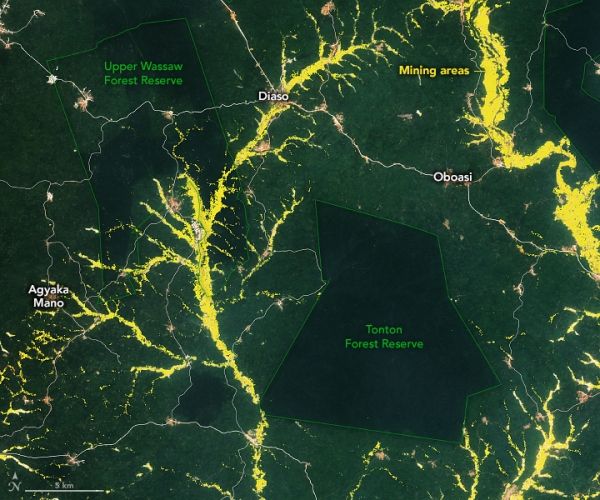An analysis of sediment cores from the Bering Sea has revealed a recurring relationship between warmer climates and abrupt episodes of low-oxygen “dead zones” in the subarctic North Pacific Ocean over the past 1.2 million years.
articles
Detecting Gold Mining in Ghana
Researchers are using satellite data to locate small mines that can cause long-term damage to forest communities and human health.
Is Carbon The ‘Crop’ Of The Future?
Changes in environment, government policy, technology and more have increased interest in carbon farming, Texas A&M AgriLife experts say.
NASA Scientists Use Lightning to Help Predict Hurricane Intensity
Instead of chasing storms, NASA researchers are using new weather prediction methods to see storms ahead of time.
Precise Data for Improved Coastline Protection
Researchers working under the leadership of the Technical University of Munich (TUM) have conducted the first precise and comprehensive measurements of sea level rises in the Baltic Sea and the North Sea.
Meet 5 NOAA Buoys That Help Scientists Understand Our Weather, Climate and Ocean Health
Keeping track of ocean health is critical for understanding climate change, weather patterns, and the health of important fisheries. But how do NOAA and partner scientists gather data on such a vast environment?










